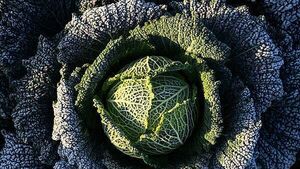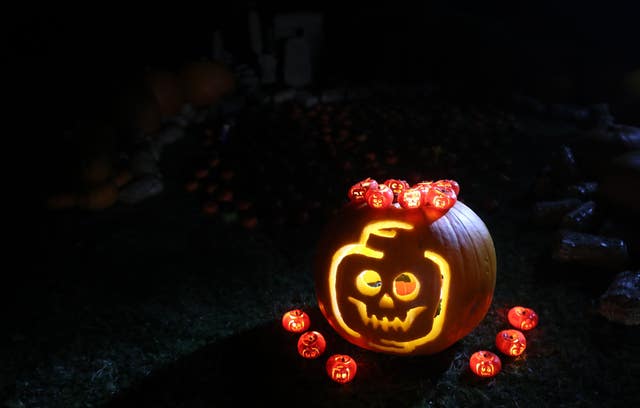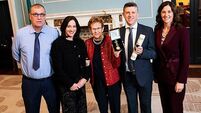Cabbage divination and turnip lanterns revived ahead of Halloween

By Rebecca Black, PA
Old seasonal traditions, including cabbage divination and turnip lanterns, are being brought back to life by a Northern Ireland museum this Halloween.
While the image of the modern Halloween is dominated by pumpkins, fireworks and trick or treating, the Ulster Folk Museum is reaching back further to Samhain, the ancient Celtic festival marking the first day of winter.
Victoria Millar, senior curator of history at the attraction in Cultra, Co Down, explained that Samhain signalled the beginning of the cold, dark, winter months of the year and was marked on November 1st, and with the lighting of bonfires and feasting the night before on Samhain Eve.
Following the spread of Christianity, Samhain Eve became known as All Hallows’ Eve, falling the evening before All Saints’ Day on November 1, also known as All Hallows’ Day, which commemorated the saints in heaven.
This was followed by All Souls’ Day on November 2nd, which commemorated all departed souls, including those believed to be in purgatory.
All Hallows’ Eve increasingly became associated with the dead who were thought to roam the land during this night.
The museum has been able to bring the old traditions back to life thanks to an archive of notebooks written by local people and community groups from the late 1950s when the museum was starting to be formed.
Ms Millar said the stories in the archive are “as chilling as they are captivating”.
“Masks were worn, fires were lit and stories of ghosts, fairies, and even the devil, were shared to entertain, warn, or protect the household,” she said.
“These traditions give us a glimpse into the lives and imagination of people in Ulster around the turn of the 20th century.”

While some may remember coins wrapped in tinfoil in a Halloween apple tart, traditionally apple pies and barmbrack were baked with a number of hidden items.
These included a ring, a coin, a thimble, believed to foretell marriage or wealth, or perhaps spinsterhood or misfortune.
But one of the most surprisingly traditions involved cabbages being used for divination, with examples of this across the island of Ireland and Scotland.
“We have an account from Enniskillen of one young man who walked backwards into the cabbage garden with his eyes shut to pull a stalk, the shape of which was said to predict the physique of his future wife,” Ms Millar said.
An entry from Keady in 1960 recalls going out into the garden in the dark to pull up cabbages, “hoping for a long straight stalk”, denoting a similarly shaped husband or wife.
“It also said when there was plenty of soil on the stalk, it meant that there was money as well, so they would be wealthy, so depending on the luck of the cabbage you picked, that may indicate who you may married,” Ms Millar added.
Meanwhile trick or treating is still well known, but its origins as “guising” or “mischief night” are perhaps not.
“Children and adults wore masks or ‘false faces’ to play pranks on neighbours – sometimes climbing on roofs, tying threads to door knockers, or placing small fireworks under doors, as recorded in Limavady, Portadown and Crossgar,” she said.
She also explained why turnips were the original lanterns before pumpkins became popular.
“Today we reach for pumpkins because they’re softer and easier to carve and of course because of the American influence on Halloween,” she said.
“But for centuries, turnips were hollowed out and made into lanterns, meant to frighten or amuse passers-by and to ward off fairies and spirits.
“They were the original Halloween lanterns – gnarled, misshapen and wonderfully unsettling.”
Ms Millar added that both Samhain and All Hallows’ Eve were ultimately social festivals at a dark time of year.
“A time when even in the darkest part of the year, warmth and laughter could be found in company and shared stories,” she said.
“The Ulster Folk Museum has preserved these stories of Ulster’s shared heritage and through our work, we’re connecting visitors to the past through the lens of today.
“Ulster’s traditions are not relics, they are living systems of knowledge that continue to influence how we live today.
“These customs have shaped who we are and by celebrating them we are all learning how our past informs our future.”
The Ulster Folk Museum’s Halloween event will running from Wednesday October 29th to Friday October 31st.
For more information on this year’s event, visit ulsterfolkmuseum.org






